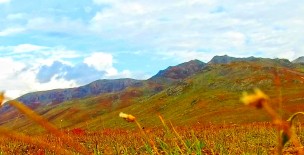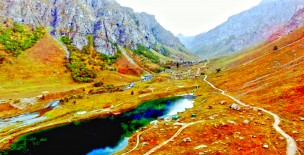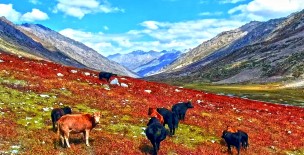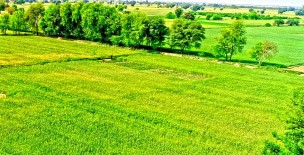Yaks are heavily built animals with a bulky frame, sturdy legs, rounded cloven hooves, and extremely dense, long fur that hangs down lower than the belly.
The domestic yak (Bos grunniens) is a long-haired domesticated bovid found throughout the Himalayan region of the Indian subcontinent, the Tibetan Plateau and as far north as Mongolia and Russia. It is descended from the wild yak (Bos mutus).
Yaks belong to the genus Bos and are therefore related to cattle (Bos primigenius species).
Mitochondrial DNA analyses to determine the evolutionary history of yaks have been inconclusive.
The yak may have diverged from cattle at any point between one and five million years ago, and there is some suggestion that it may be more closely related to bison than to the other members of its designated genus.
Apparent close fossil relatives of the yak, such as Bos baikalensis, have been found in eastern Russia, suggesting a possible route by which yak-like ancestors of the modern American bison could have entered the Americas.
The species was originally designated as Bos grunniens ("grunting ox") by Linnaeus in 1766, but this name is now generally only considered to refer to the domesticated form of the animal, with Bos mutus ("mute ox") being the preferred name for the wild species.
Although some authors still consider the wild yak to be a subspecies, Bos grunniens mutus, the ICZN made an official ruling in 2003 permitting the use of the name Bos mutus for wild yaks, and this is now the more common usage.
In parts of Tibet and Karakorum yak racing is a form of entertainment at traditional festivals and is considered an important part of their culture.
More recently, sports involving domesticated yaks, such as yak skiing or yak polo, are being marketed as tourist attractions in Central Asian countries, including in Gilgit-Baltistan, Pakistan.













































